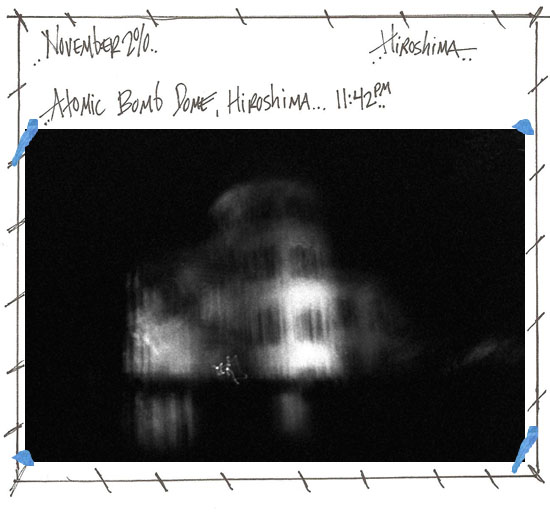
“After the war I saw the photo of the mushroom cloud, but I thought they should have shown photos of the people underneath. It’s a bloody shame!”
-Ron Schlote
Ron Scholte was serving in the Royal Netherlands East Indies Army (KNIL) when he was taken as a prisoner of war by the Japanese when they invaded Java in 1942, and later sent to Fukuoka Camp 14 in Nagasaki. He was used as a forced laborer until the end of the war in August 1945. He was one of 120 Dutch POWs to survive the atomic bombing of Nagasaki.
Ron was working inside a tunnel about a mile from the hypocenter when the atomic bomb detonated. When the workers heard a plane approaching, some of them went near the tunnel’s entrance to peek out. When they only saw a B-29 I thought it couldn’t have been an air raid. Then a small parachute was dropped. Suddenly a bright flash of light blinded me and I was tossed back into the tunnel by a strong gust of wind.
“I didn’t know the type of weapon that was used. I was in the middle of the chaos and couldn’t think of the end of the war. We went back to the city without knowing the consequences of radiation exposure. For a couple of days my task was to gather dead bodies to be cremated. It was the most painful thing I had to do- especially when the bodies were children. Sometimes I would pick up charred bodies which would just break apart. There were a lot of wounded. I also carried a wounded soldier on my back through a field to get medical attention. I felt it was my duty to help no matter how badly I had been treated previously.
Nagasaki is now a beautiful city but it was totally destroyed. I had to stay on top of a hill for two nights because the city was burning. I saw the entire city in flames. Many of us were burned and our open wounds were attacked by maggots.
I didn’t learn about the surrender until a couple of days after. A Japanese man approached me and said “War Finished. Japan and America are now friends.” The soldiers disappeared and only the honcho (boss) from the Mitsubishi shipyard was there. He told me that he lost all his family and had nothing to eat. I had a little food and gave it to him. I hugged him when we said goodbye. I felt deep sympathy for his loss. Three weeks later we were liberated.”
I had the privilege of photographing Mr. Scholte in January 2015. I had learned about his story and it took me a long time to find him. Even on the day of our meeting my train connections to the southern Netherlands were delayed because of a small snowstorm in Amsterdam. I arrived at his home as the sun set, a few hours late, and snapped this photograph when I caught him glimpsing out a window as I walked to the front door. I didn’t think this would be the portrait I would use in the project. But as time passed and I thought about his story it made sense. When I look at this photograph, he is beginning to fade away in the reflection of the landscape. A few years prior, he had begun writing down his experiences in Nagasaki because he was diagnosed with dementia. The story was too important to be lost in his fading mind so I’m grateful he had documented his experiences in great detail. That day he was able to speak for hours about what he had seen in Nagasaki.
He was living alone but shortly after my visit was moved to an elderly home as his mind rapidly deteriorated. He lived a little less than four years after we met and passed away at the age of 94. Not many people know that there were Dutch POW’s affected by the atomic bomb. Most of them died from various forms of cancer within ten years of 1945. The majority of Dutch people I speak to about Mr. Schlote and the other Dutch POW I photographed are shocked to learn about their stories.
This portrait is a part of From Above, which is a collection of portraits and reminiscences of atomic bomb survivors. From Above is permanently exhibited at the Nagasaki Peace Memorial Hall for Atomic Bomb Victims. It has also been exhibited in numerous international museums and exhibition spaces. From Above was released as a limited edition book released as a limited edition book available at https://www.photoeye.com/bookstore/citation.cfm?catalog=I1040&i=&i2








